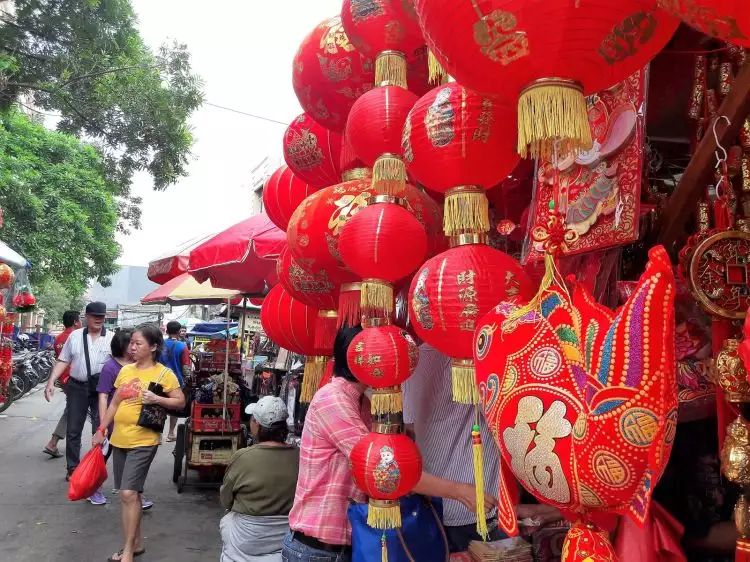© 2017 brilio.net/Retno Wulandari
The capital is bursting with red, gold and rooster ornaments during the Chinese New Year, or locally called Imlek, season.
Glodok area, often dubbed as Jakarta's own Chinatown, is especially vibrant and bustling with visitors compared to other places in town.
In Glodok, Imlek is not owned only by the those with Chinese descent, but by all residents regardless their religious and ethnic background.
Fajar, a seasonal Imlek ornaments seller in Pancoran Market, said that the New Year is a blessing for street vendors like him.
"People always come to my stall looking for red lanterns, rooster wall decorations, and Ang Pao envelopes. Sometimes they also buy accessories for their cars and mobile phones, gold sycee replicas, fake cherry blossom tree, and other stuff," he said. "They also seek for new clothes, food, fruits and worship supplies such as incenses, lotus-shaped worship papers, and red candles."
The season also attracts more buyers to flower shops as the Buddhists usually arrange fresh flowers to decorate their houses for the celebrations and get-together events. They also bring flowers for their worship rituals.
People who pray in the temple are free to choose any flower as their offerings, but there aretwo kinds they cant leave out. First,tuberose, which is a special offering for (the Goddess of Compassion) Guan Yin, said Yati, an owner of a flower stall located in front of Dharma Bhakti Templein Glodok's Petak Sembilan area.
The other one is lotus bud. If we seeflowers as food of the gods, tuberose is like the rice and lotus is the meat.
Yati, like Fajar, is a seasonal sellerwho comes to Jakarta only during Buddhist holiday seasons.
But the festivities are felt the most among Chinese-Indonesians who actually celebrate the holiday. However, Chinese New Year is not only fireworks and feasts. It is also about reflection and prayers.
Dharma Bhakti Temple is the area's most popular destination during the season.
The temple is flocked with visitors even before the actual New Year. The temple usually hosts a feast one day prior the New Year, but opts for a calmer celebration on the actual New Year's day.
"(For the day) we usually only prepare the worshipping facilities and arrange candles for the congregation," said A Siu, the temple's caretaker.
Similarpreparation process was seen at Toasebio Temple located nearby.
Employees were busy setting up red lanterns and candles. Several people were seen praying, presenting their offerings to gods, hoping for a prosperous new year.
Hendarto, the temple's public relations, said that people usually flocks the temple on the midnight of New Year's day. "Most of the midnight visitors are young people while older ones usually opt to come before dawn," he said.
In the end, regardless of each one's interests, Glodok shows that nothing is really owned only by one group. Because in Jakarta, plurality and diversity is the soul of its every corner.

In the year of the rooster, people are looking for roostery decorations.
© 2017 brilio.net/Retno Wulandari(brl/red)